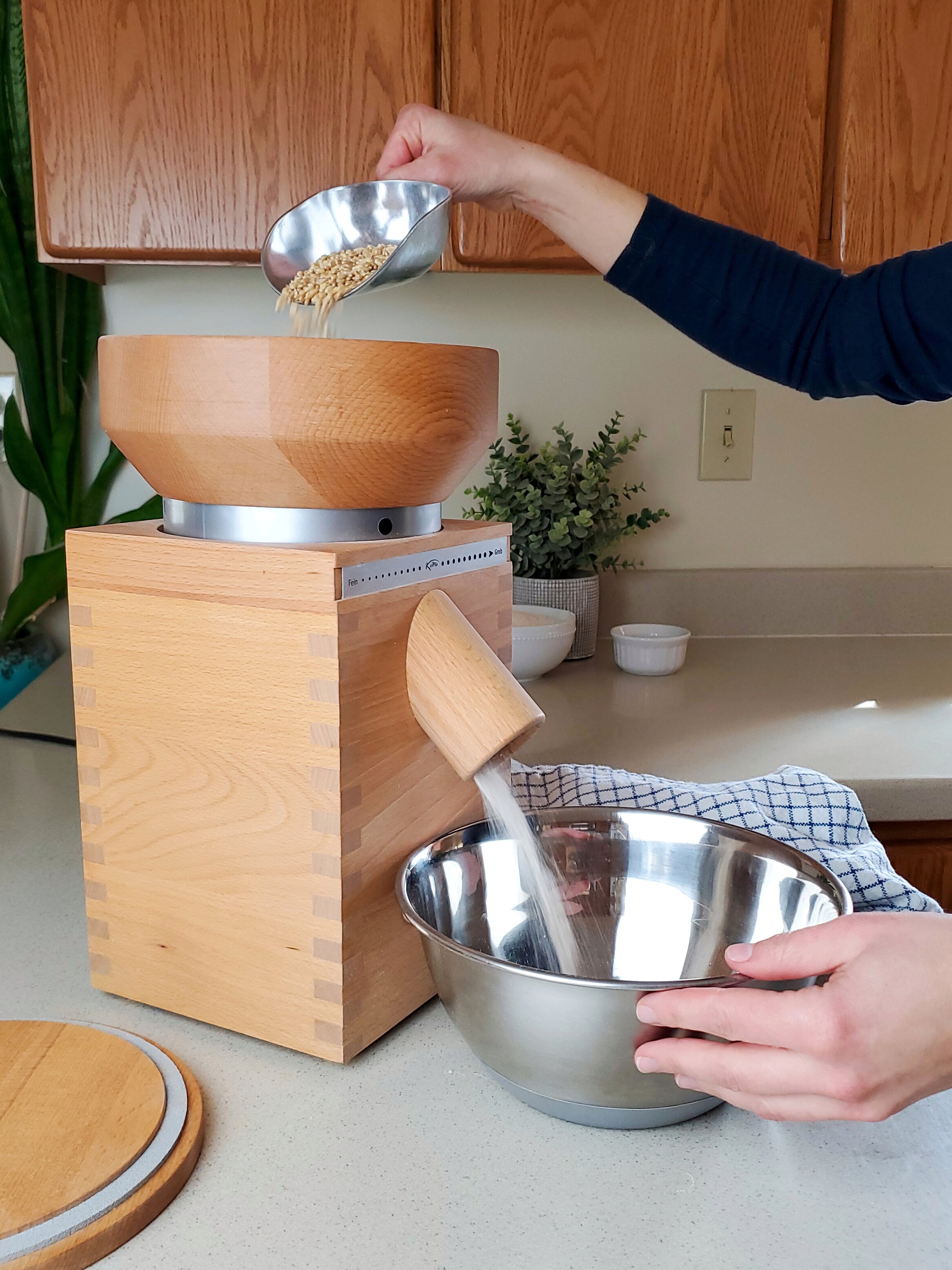7 Tips for Making Flour Milling Part of Your Routine
Hi Friend,
Have you been there? You have your batter all mixed together and are getting ready to put it in the oven when you realized that you accidentally used store bought flour instead of freshly-milled flour. You didn’t mean to. You just got wrapped up in the recipe and started baking like normal.
If you’ve done this, you’re not alone. I don’t know how many times I absentmindedly grabbed for all-purpose flour instead of milling my own.
Milling Must Become a Habit:
Milling is about more than the flour, it’s part of your routine. It’s a lifestyle change. And like all lifestyle changes, we are required to create a new habit or break an old one. Your new goal is to create the habit of milling flour and breaking the habit of using store-bought flour out of convenience.
Just like any other habit you’re trying to create, you need to intentionally set yourself up for success. If you want to start working out daily, you need to schedule it into your day. If you want to eat out less, you need to create a weekly meal plan and avoid driving by restaurants around meal time.
Tips for Making Milling a Habit:
These tips for making milling your own flour part of your daily routine are tried and true. This is how I and many of our followers on Instagram and Facebook started.
1. Create a milling station.
The more convenient you can make milling, the more likely you will be to actually mill. Keep your mill on your countertop with your flour bowls and grains nearby. This will take all the “work” out of milling.
When planning your milling station, think of everything you use consistently when you mill. I keep my mill next to my stand mixer with my bowls, bread machine, and grain in nearby cupboards.
2. Keep a small quantity of grain in your kitchen.
If you prefer to buy your grains in bulk, I recommend keeping a small quantity of grain in your kitchen next to your mill. I know from experience, if I have to run downstairs to my store room to get wheat berries for a recipe, I am less likely to actually follow through and make the recipe.
Click here to learn how to properly store your wheat berries.
3. Schedule time to bake.
Whether it is once a week or every day, scheduling time to bake makes a difference. Because you have designated that time specifically for baking, you will feel less rushed and be more likely to make milling a habit.
4. Look for resources specifically for freshly-milled flour.
By starting out with resources specifically for freshly-milled flour, you learn faster and will immediately have better results. These little wins will make you want to continue milling. After you feel comfortable with these recipes, you can begin to adapt your family favorites for freshly-milled flour.
The one book I recommend to everyone is “The Home-Ground Flour Book” by Sue Becker. Also, the blog A Red Spatula has wonderful recipes for freshly-milled flour and I enjoyed the cookbook, Whole Grain Baking Made Easy by Tabitha Alterman.
5. Freeze extra flour.
I know that freshly-milled flour deteriorates quickly, but I recommend milling extra flour and storing it in the freezer when you start milling. This helps break you of the habit of reaching for bags of flour when you’re faced with a mealtime meltdown.
Confession: Even though I’m in the habit of milling as I need, I still mill extra flour going into the weekend so that Kevin can use it for Sunday breakfast.
6. Don’t change everything to freshly-milled overnight.
Once you’ve tasted freshly-milled flour, it’s hard not to want to make everything from it immediately. However, to newbie millers that can get overwhelming quickly. Choose 2-3 things to start with, like sandwich bread and muffins, and slowly work up from there as they become part of your weekly routine.
7. Throw out store-bought flour.
This is the most obvious tip, and probably the scariest to do. It’s no different than purging your cupboards when you are determined to decrease sugar or processed food intake. If store-bought flour is not in your kitchen, you can’t default to it out of habit or convenience.
Full disclosure here: I do have store-bought flour in my kitchen. I use it for thickening sauces or for testing a recipe before converting it fully to freshly-milled. After years of milling, I rarely use store-bought flour.
I hope these tips help you make milling part of your routine. Remember above all, to be patient and give yourself grace. This is a new skill you’re learning, but it is 100% worth it!
Are you new to milling and want to learn more? Get our FREE “The New to Milling Guide” here.
Best,
The Sieverkropps

